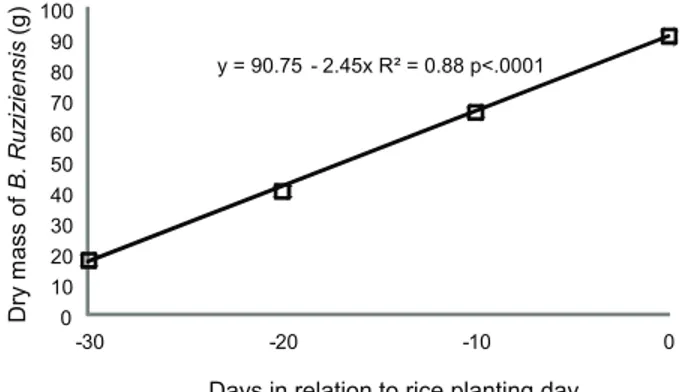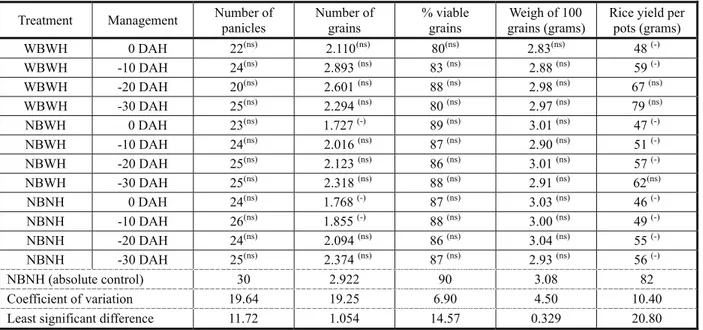Brachiaria ruziziensis and herbicide on the yield of upland rice
Texto
Imagem



Documentos relacionados
The probability of attending school four our group of interest in this region increased by 6.5 percentage points after the expansion of the Bolsa Família program in 2007 and
One of the sowing rows was utilized to determine plant height, number of stalks and panicles per square meter, percentage of fertile stalks, numbers of grained and blank spikelets
Biochar addition did not influence yield components of upland rice and cowpea, but resulted in increased soil N retention, which influenced rice dry shoot mass, spikelets
of grass shoots two days after), to check the effect of the herbicide without Brachiaria shoots, management carried out 10 or more days before rice sowing had
Both in the presence and in the absence of subsoiling, rice yield increased quadratically with the increments in compaction pressure on the sowing furrow (Table 3), with
The objective of this research was to determine the influence of zinc, manganese and copper on shoot dry matter yield and uptake of macro and mi- cronutrients in upland rice,
Predictive accuracy of the GGE biplot models considering the use of the mean phenotypic and genotypic values estimated by the REML/BLUP method for 20 rice genotypes evaluated in
Brachiaria in consortium with either crotalaria or sudangrass results in higher incidence of grain stain and lower rice yield.. The soil in the Brachiaria and cowpea consortium has